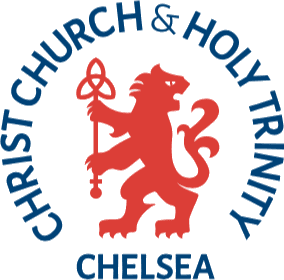Music at Christ Church & Holy Trinity
INTENT:
The National Curriculum for Music aims to ensure that all pupils:
Perform, listen to, review and evaluate music
Be taught to sing, create and compose music
Understand and explore how music is created, produced and communicated
Our intent is to give our pupils a rigorous, broad, high-quality curriculum that enables children to gain a solid understanding of music through listening, singing, playing, analysing, composing and evaluating music across a wide variety of historical periods, styles, traditions and musical genres. Music is seen as a channel for self-expression, a means of learning about the world and as a way to have fun. Through a wide range of musical experiences, we aim to increase children’s self-confidence, creativity and sense of achievement. We aim to help children understand the value and importance of music in the wider comunity and to ensure that they are able to use their musical skills, knowledge and experiences to involve themselves in music in a variety of different contexts. Above all, we want to encourage pupils to develop their appreciation of music by teaching them practical musicianship skills, so that every child has regular experience of making high-quality music and therefore leaves our schools with a solid musical skill set and a life-long love of music.
IMPLEMENTATION:
During our class music lessons, we follow the DaCapo Foundation classroom music programme, which is delivered via the DaCapo ToolBox. The ToolBox has aims and objectives for many levels of musical development and understanding, each level divided into stages. The subject areas covered from YR to Y6 are:
Pulse
Pitch
Rhythm
Musical concepts
Improvising & composing
Literacy
Coordination
The programme starts with the most basic musical skills and works through each area, one step at a time, in a very logical and realistic sequence, ensuring that the skills introduced become secure and internalised.
Each DaCapo class music lesson is structured in a way that ensures that variety, engagement, music-making and enjoyment are the focus. First, a “warm-up”, followed by “Rhythm Card” activities to develop their musical literacy, some “movement”, “listening” and finally “creative singing”. Each lesson gives every child a chance to play percussion instruments (tuned and untuned); to be involved in whole class body percussion; to listen to and to discuss/respond to a short segment of music by the designated composer for their particular year group and do plenty of singing! (It is a vocal and movement led approach, which means every child can be involved, and understanding is developed through the use of their own voices and bodies, before applying this understanding to tuned and untuned instruments.)
Children are introduced to DaCapo’s own Kodaly methodology to make sure that children understand the music that they are singing. Put simply, music is taught in intervals using specially designed names for each note and accompanying hand signs to aid visual learners. By Year 6, children sing in harmony with each other, are able to understand the difference between tones and semitones and sing in full chromaticism. They then apply this learning to the Y6 Orchestra, playing a variety of genres in an exciting and ambitious whole class ensemble.
IMPACT:
By the end of KS2 children will be working at or, in most cases above, the expected national standard.
They will
Have played and performed in solo and ensemble contexts, using their voices and playing musical instruments with increasing accuracy, fluency , control and expression
Be able to improvise and compose music for a range of purposes using the inter-related dimensions of music
Be able to listen with attention to detail and recall sounds with increasing aural memory
Be able to use and understand musical notation
Appreciate and understand a wide range of high-quality live and recorded music drawn from different traditions and from great composers and musicians
Have begun to develop an understanding of the history of music
Join their secondary school with the necessary musicianship to be able to take part in a music ensemble
Have had fun




